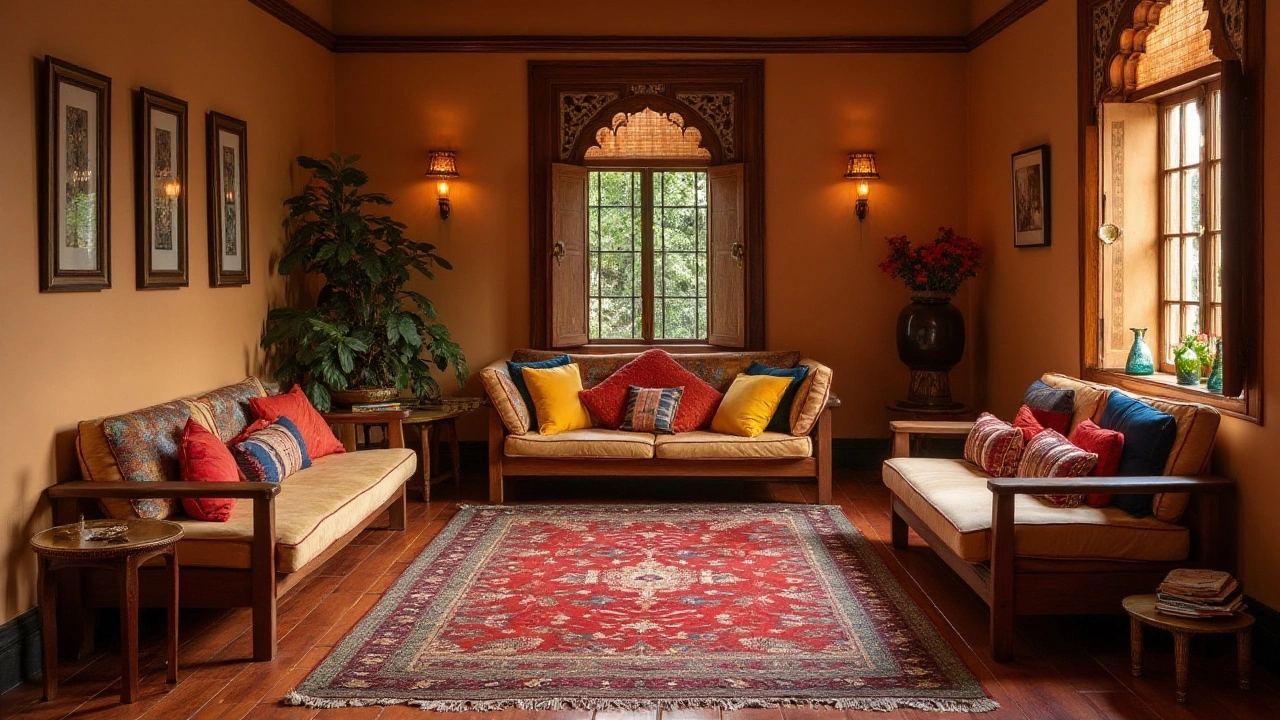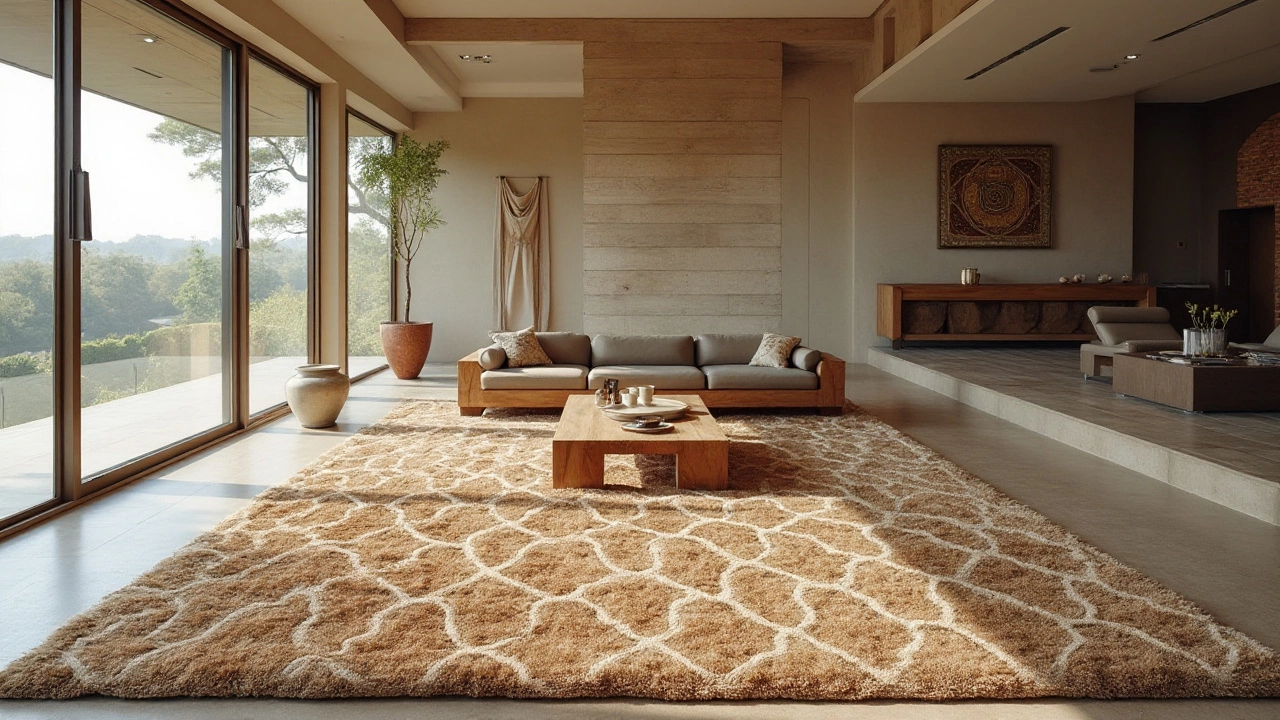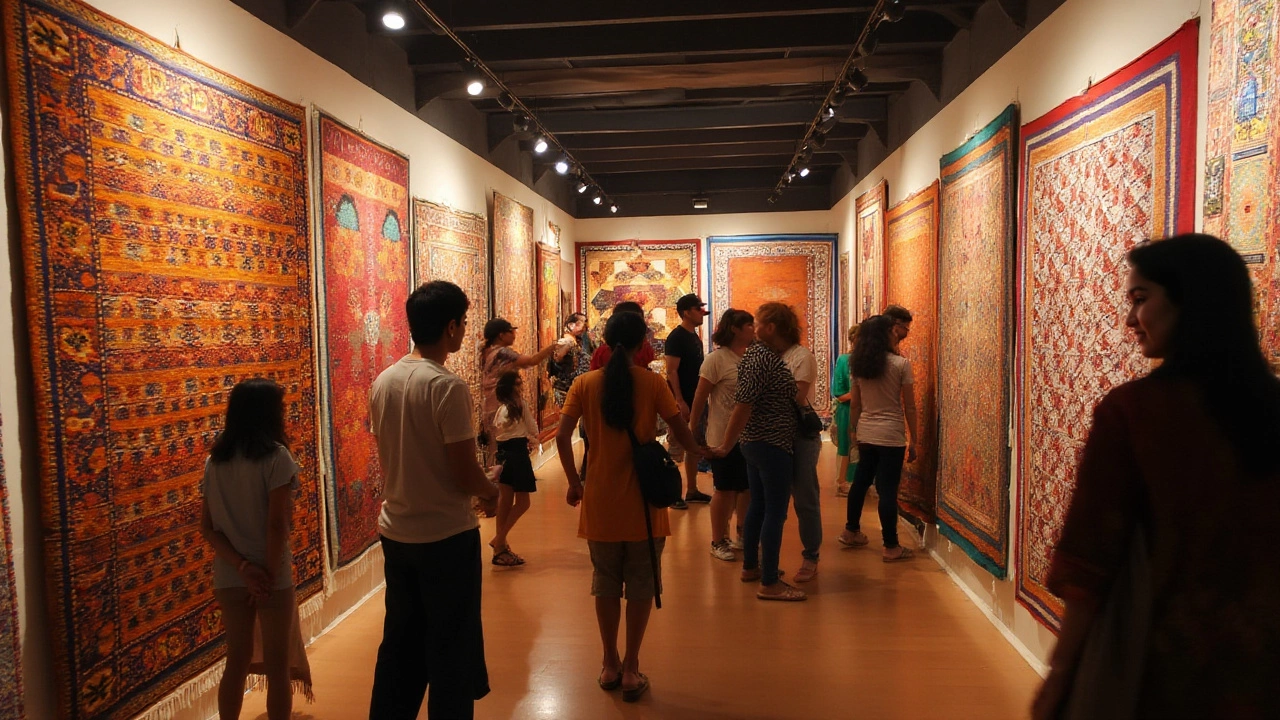Understanding Rugs: Their Meaning, Use, and More

Rugs are more than just pieces of fabric laid out on the floor; they are storytellers, cultural artifacts, and integral parts of home decor. Throughout history, rugs have symbolized wealth, served as art pieces, and offered comfort underfoot. As we explore their diverse meanings, we'll uncover their roles in transforming spaces from mundane to magical.
In today's homes, rugs fulfill many purposes, from protecting floors to tying together the elements of a room. They come in numerous styles, materials, and sizes, each with a unique impact on your interior space. Choosing the right rug involves more than just matching colors; it’s about understanding the flow and vibe of your home.
Join us as we navigate through the fascinating world of rugs, offering insights and tips on how to select and position that perfect rug that not only complements your home but also resonates with your personal taste.
- The Origins and Historical Significance of Rugs
- The Different Types of Rugs and Their Uses
- How Rugs Transform Living Spaces
- Tips for Choosing the Perfect Rug for Your Space
The Origins and Historical Significance of Rugs
The story of rugs is almost as old as civilization itself. Stretching back thousands of years, the earliest known rugs date back to ancient Persia, around 500 B.C., where they were not just decorations but vital components of everyday life. In the cold climates of Central Asia and the Middle East, rugs provided not only warmth but also served as substantial pieces of art within homes and temples. Historical records and findings have revealed that these intricate textiles were often crafted with methods that remained unchanged for centuries. The artistry and techniques used were passed down through generations, allowing families to preserve cultural narratives and skills through weaving. Rugs were often considered family heirlooms, treasured for their beauty and craftsmanship, telling tales through symbolic patterns and colors.
The meaning of rugs extended beyond mere practical use. During the Middle Ages, they were symbols of wealth and status. The more intricate the design and the rarer the materials, the more highly valued these rugs were. In many cultures, owning a well-made rug was akin to possessing precious jewels. The imagery found within a rug could describe everything from hunting scenes and landscapes to intricate floral designs, each weaving a story of its own. Some of these traditional methods spilled over into the making of modern rugs, infusing them with historical significance even today. The beauty and mystery behind these designs can often be seen reflected in contemporary home decor.
Rugs have had an indelible influence on commerce and trade. Consider the Silk Road, where rugs were highly sought-after trade goods. Merchants would travel great distances trading spices, silk, and rugs. This trade network helped expand the cultural influence of rugs, making them accessible across Europe and Asia. The spread of rugs through these intricate trade routes contributed to the development of diverse styles and techniques as weavers began to integrate their own cultural motifs and methods. In this way, rugs played a substantial role in the cross-pollination of artistic styles across continents.
"Hand-knotted rugs are indeed unparalleled in their beauty and artistry. The time and skill invested in each piece make them historical tapestries," says renowned art historian, Lisa Duran.
As their popularity grew in Europe during the Renaissance, rugs began to make appearances in paintings as opulent underfoot decorations for the wealthy aristocracy. This period marked the adaptation of many Eastern designs into Western tastes. The introduction of interior design as a concept also bolstered the idea of rugs being both functional and aesthetic centerpieces of a room. For those lucky enough to afford them, rugs were coveted for their ability to provide uniform color and comfort to the developing designs of the home.
Today, rugs continue to blend tradition with innovation. Rug weaving is a testament to humanity's ability to create beauty from practical necessity. With their deep cultural roots and symbolic meanings, rugs are cherished pieces that reflect both history and personal expression. Whether hand-knotted or machine-made, the significance of rugs culminates in their roles as pieces that bring history, beauty, and function together seamlessly. The intertwined stories within their threads add warmth and richness to modern homes, carrying forward history's whispers into the present day.

The Different Types of Rugs and Their Uses
Rugs come in a fascinating array of types, each lending a distinct flair and function to a space. Whether you're aiming for a cozy sanctuary feel or a minimalist modern vibe, the right rug can do wonders. Let's try to categorize these different styles, which often overlap in their uses but bring their unique characteristics to the table. Perhaps the most traditional and well-known are oriental rugs, renowned for their elaborate designs and rich history. Originating from Asia, these rugs are hand-knotted and often use natural dyes and materials, like silk or wool. They're perfect for adding a touch of opulence and art to a living room or study, where their intricate patterns can become a conversation starter.
Due to their luxurious nature, oriental rugs are often carefully curated pieces, and can last generations, making them a worthy investment. On the contemporary side, we find shag rugs, famous for their plush texture and retro vibe. Popularized during the bohemian era of the '60s and '70s, shag rugs are all about comfort, often placed in bedrooms or lounges where your feet will appreciate the softness. These rugs are made of deep piles and can sometimes be difficult to clean, but their aesthetic appeal is undeniable for those seeking that touch of casual comfort.
Flooring beauty doesn't stop there; flatweave rugs offer an entirely different approach. Unlike their plush counterparts, these are usually much thinner, which sometimes makes them more practical for high-traffic areas like hallways or kitchens. Kilim and dhurrie rugs belong to this category, boasting geometric designs with vibrant colors. Because of their lightweight construction, they are easy to move and change, making them ideal for those who like to refresh the decor regularly.
"The best edited a room can be is by employing a rug that defines its use and compliments the vision" — Susan Sully, Interior Design Expert
Modern rugs, on the other hand, focus on simplicity and abstract designs, often using synthetic materials that are both durable and affordable. These rugs cater to contemporary tastes, matching well with minimalist or industrial-themed interiors. They are usually found in various sizes and shapes, from small area rugs under coffee tables to larger pieces that define an entire living room space. Versatility in design and functionality makes these rugs a popular choice for young homeowners or renters as they're easy to replace as trends evolve.
For those who prefer eco-friendly options, jute and sisal rugs are a solid choice. Made from natural fibers, they offer a raw, earthy texture that works well in rustic or beach-themed homes. They’re durable and can handle a lot of foot traffic, though they may require a bit more care to avoid staining. These rugs bring a slice of nature indoors, adding warmth to tile or hardwood floors. No matter your style or need, there's a rug to satisfy it, and exploring these different types can inspire a creative touch to any room in your home.

How Rugs Transform Living Spaces
Rugs hold an unparalleled ability to redefine a living space, acting as transformative elements that knit together the various components of a room. By introducing a rug into a space, one can create focal points that draw the eye and often serve as the defined 'heart' of a room. They work wonders in adding warmth, both visually and physically, making an otherwise cold room feel inviting. Rugs can layer a room with texture, bringing interest and depth that elevates simple interiors into something unique and personal.
The right choice of rugs can also lead to the delineation of spaces, especially important in open-plan homes. By using distinct designs and patterns, rugs subtly 'zone' areas, helping define a living area from a dining space without the need for walls. This is particularly effective in modern, minimalist interiors where heavy furniture isn't always the solution. If you ever stepped into a room that seemed larger and more cohesive, there's a good chance it was thanks to smart placement of rugs acting as bridges between furniture.
The artistic elements of a rug enable it to be a centerpiece. Think of it as a canvas that lies beneath your feet—one that can carry motifs, tell stories of distant lands, or simply enhance the thematic colors of a room. A well-chosen rug can bolster your design choices, pulling in disparate color notes from wall art or adding comfort and luxury against the backdrop of minimalist furniture. The best rug choices harmonize with existing decor, creating continuity.
"A rug is the soul of the apartment. When your eye sees a beautiful rug in a room, it gets imprinted in you and it becomes a part of you." – Isaac Mizrahi
Functionally, rugs serve a multitude of purposes that often go unnoticed. They are great sound absorbers, muting echoes and softening noises, perfect for spaces with high ceilings or wooden floors. In fact, many experts suggest using rugs in homes to absorb around 30% of excess noise, creating a more serene environment. Moreover, they're practical as insulators, keeping homes warm during colder months and aiding energy efficiency.
When it comes to choosing the perfect rug, consider not just the aesthetics, but the feel underfoot. Soft and plush rugs may be ideal for a bedroom, offering a gentle wake-up call every morning. Meanwhile, more durable materials such as jute or sisal can be better suited for high-traffic areas, marrying endurance with design. In recent years, the popularity of layering multiple rugs has grown, adding an innovative touch to decorating, while allowing for seasonal changes without the need to entirely replace an existing layout.
In sum, a well-placed rug can make a space feel cohesive, fill your home with character and warmth, and align with your personal style. Whether opting for a richly patterned Persian rug or the minimalist charm of a plain Monochrome, thinking through your rug choices is a crucial step in curating an environment that feels like home. By paying attention to the details—including size, placement, and material—you'll be on the right path to transforming your house into a haven of comfort and style.

Tips for Choosing the Perfect Rug for Your Space
When it comes to selecting a rug for your home, it’s all about finding the right balance between functionality and style. This process involves considering several factors that can impact not just the look of your space but also its feel and function. A good starting point is to think about the size of the rug. Measure your space carefully, considering whether you want the rugs to sit under furniture or serve as an accent piece. Rugs should extend beyond the furniture in a living room setting, while in dining areas, they should be large enough so that chairs remain on it even when pulled out.
The material of the rug plays a crucial role in its longevity and maintenance. Wool is a popular choice due to its durability and ability to withstand heavy foot traffic. For a more budget-friendly option, consider synthetic fibers which can mimic the luxurious feel of wool but require less upkeep. Cotton rugs are light and often reversible, making them a versatile choice for casual spaces or underfoot in kitchens.
Color and pattern are aesthetic decisions that have significant impacts on a room's vibe. Neutral shades can create a calming backdrop, while bold patterns can inject personality and draw the eye. When selecting these visual elements, take into account the existing color scheme and style of your room to ensure cohesion. Personalized statements can be made with handmade or vintage rugs, each carrying unique stories and craftsmanship details. As Diana Vreeland famously said,
"The eye has to travel."Rugs can be the journey your gaze takes each time you enter the room.
Don't forget the pile height, which affects not only the look but also the feel beneath your feet. Low-pile rugs are good for high-traffic areas and rooms where you might be moving furniture, like the dining room. High-pile rugs, such as shag, are luxurious and provide warmth - ideal for bedrooms and lounge areas where comfort is key. Keep in mind that thicker rugs need regular maintenance due to their ability to trap more dust and dirt.
The placement of the rug is the next pivotal step in your decision-making process. Consider the focal points in the room and how the rug's position can enhance them. Centralized placement can anchor larger areas, while layering rugs can add depth and texture to a space, giving it a multifaceted appeal. Additionally, using a rug pad can extend the life of your rugs by reducing wear and providing extra cushioning beneath them.
If you're still uncertain, sample swatches can be a perfect way to visualize how a rug will look in your home. Many stores provide this service, allowing you to try before you buy, ensuring full satisfaction with your investment. Remember, the right rug is the one that clicks with all aspects of your living environment, weaving together threads of comfort, design, practicality, and a bit of your personality.